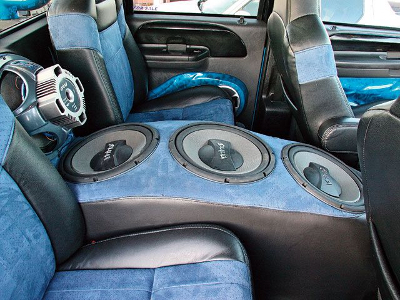We all dread this day - when all the jump-starting and coddling in the world isn't going to bring our car battery back to life. But with the Expert's helpful instructions on how to change your car's battery, you'll be moving again in no time. Before even beginning these simple steps, heed the Expert's safety advice: THE CAR MUST BE OFF! To be sure, take your keys out of the ignition. Your battery can generate a highly flammable vapor so you should work in a well-ventilated area. In addition, the battery fluid is acid and HIGHLY corrosive to skin, eyes and metal. You need to be very careful when handling it. It is a good idea to wear gloves, and safety glasses are a must!
At this point, get a firm grasp on the battery and remove it from your car. After the battery is out, spend a little time cleaning out the terminal clamps and battery tray with the Expert's baking soda/water solution. If the tray and clamps aren't getting clean, you may want to have them replaced.
Step 1 - Make Sure the Battery Needs a Change
You don't want to jump the gun on pronouncing your old battery a goner without doing some checking first. If your battery has cracks in it, you need look no further. Order up a new battery. If not, take a look in the battery terminals before making a decision. The battery terminals are the positive and negative knobs that attach wires to the alternator. Sometimes, sulfate buildup, which corrodes the terminals, is the problem. Tap the terminals gently with a hammer to see if you can break away the corrosion. If this doesn't work, try putting a mix of baking soda and water on a brush and wiping the corrosion away. You may also need to remove the terminals and clean the contact area with the battery post. Your battery may be fine after that!Step 2 - Remove the Old Battery
Once you've determined that you do indeed need a new battery, get ready to remove that old one. With the car off, scrub the top of the old battery with the mixture of baking soda/water that we discussed before. With your wrench, carefully unfasten the battery bolt that holds the negative clamp, sliding the cable clamp off the terminal. Then do the same thing for the positive cable clamp. Be careful not to touch the wrench to your car or any other metal surfaces to prevent causing a short circuit and sparking.At this point, get a firm grasp on the battery and remove it from your car. After the battery is out, spend a little time cleaning out the terminal clamps and battery tray with the Expert's baking soda/water solution. If the tray and clamps aren't getting clean, you may want to have them replaced.








